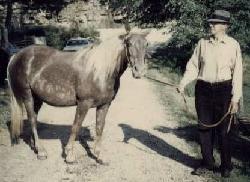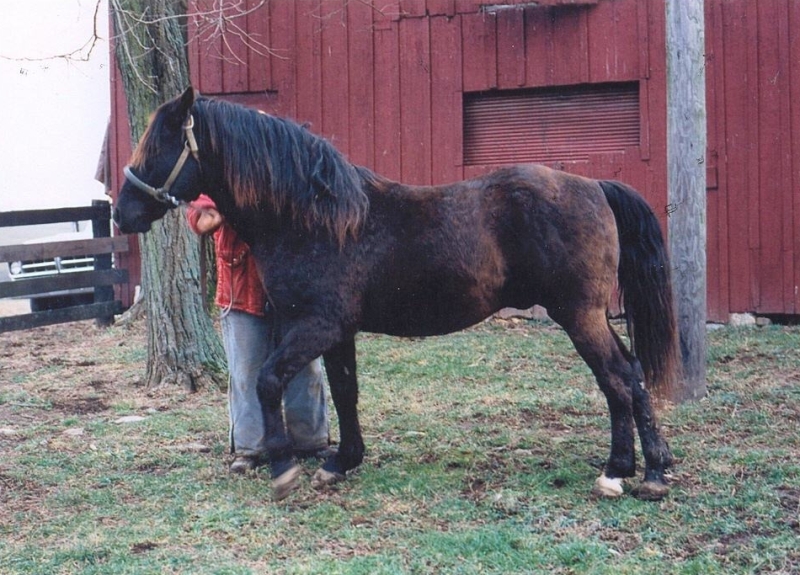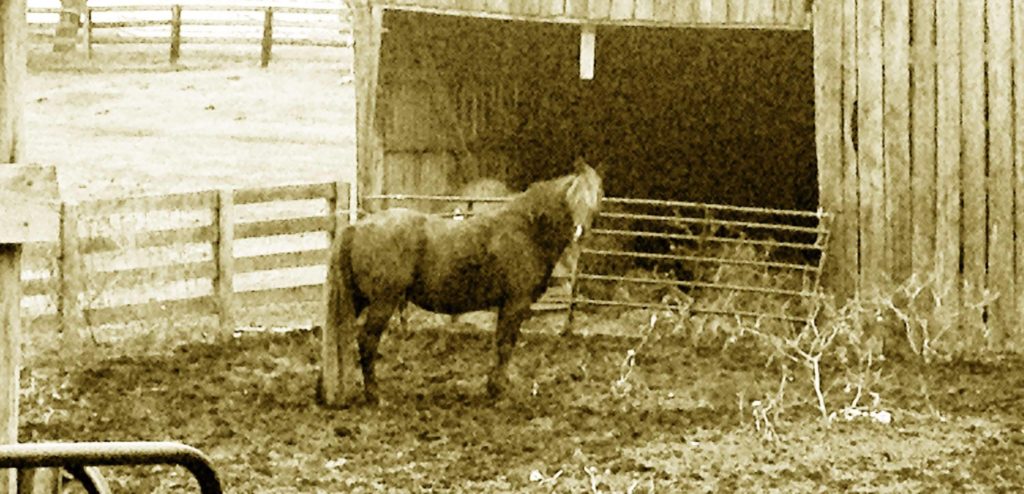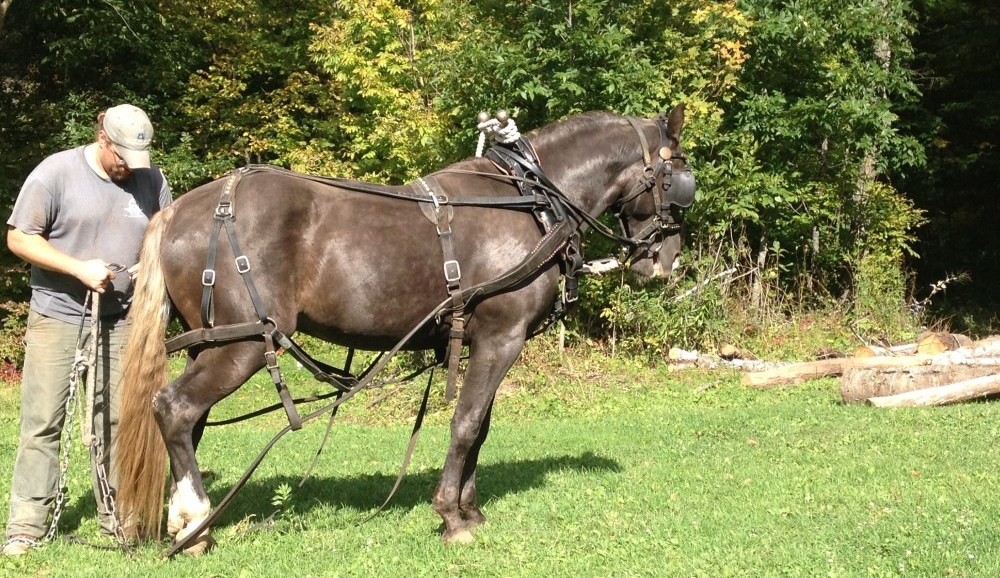That’s why I made this photo black and white. A good thing to do when you are studying horse conformation and type– it keeps you from being distracted by your favorite color or distracted by colors you don’t like. In a world obsessed with color, and the internet with horse color calculators, Punnett squares to predict offspring color, and genetic testing of color, the very best thing I think you can do is forget about color. Don’t get me wrong- I have preferred colors myself and in my mind, nothing is more classy looking than a sorrel with matching stockings. But its a distraction. And it is the last thing you should look at.
When I sat down with Ray Smith, J.B. Smith’s son, this past summer he made no bones about it– “All this color gene testing and advertising stallions as red gene negative is completely wrong!” But why listen to him? Well, to put it simply- Ray and his family have had some of the very best horses in the breed. Through years of trading and breeding horses they had learned to look past the color and see the horse for what it was. They knew that you had to have everything else- gait, conformation and temperament (in that order, according to Ray). The proof is living in Ray’s and his brother Luther’s, barns. I was fortunate to have a wonderful, if all too short introduction to their horses; which all had exceptional conformation. More importantly, they were all consistent in that conformation. In other words they all looked alike, and they had an abundance of type.
Take out any conformation book you want and study this horse. He is worth that effort– remember no horse is perfect, but Ginger comes close. Divide him into thirds and look at the body balance. Hoof and bone ample enough for his weight. Look at that shoulder. Angle of the hip. Clean legs with good angles. Short back and long belly. Look at how his neck gracefully flows onto his topline, across his back and over his muscular hips. That’s what the old timers meant by a smooth topline. Doesn’t that back just invite you for a ride? A muscular neck- typical and exactly what you want for a Rocky (I will forever remember Ray’s admonition about “pencil necked Rockies” being all too common these days). Enough crest and flesh to know that this is a stallion, but he is not obese or coarse. Head is clean cut- bold eyes, protruding lip, teacup chin and small ears- Ginger’s head is neither too large nor too small. Overall, he gives the impression of power and beauty. He could go to a show or plow a field and excel at either one.
Ginger also had it where it counts. According to Ray, one of the first things JB did with Ginger was to break him to harness and then he plowed the family garden. JB rode Ginger to work (he never had a driver’s license). As a sire, his babies inherited a nice, square, shuffle gait, regardless of the Dam’s way of going. Finally, you can still recognize a Smith’s Ginger horse even two or three generations away.
Breeding for a favored or rare color and avoidance of “unwanted” or common colors has put the cart in front of the horse, so to speak. Average horses are kept intact because they carry this or that gene. Worse yet, outstanding horses of an unpopular color are cut or otherwise never bred. As a result, we see a lot of horses (and this is in many breeds- it is not exclusive to Rocky Mountain Horses)- that look like they are put together by a committee. Lines that don’t match up. Big front ends with small hip. Baby doll heads and petite, delicate hooves. Or heads a mile long. Horses that don’t even look like a Rocky Mountain Horse are kept intact and promoted as breeding stock.
So if you’re looking for a horse– ask yourself- what are the most important characteristics to you? Gait? Conformation? Temperament? Pedigree? what particulars are you looking for? I remember when I was looking for future breeding stock- I fell in love with a weanling filly of a particular color- she was just beautiful. I had the owners put her in a round pen by herself- her buddies just a few feet away. She threw an absolute fit. COULD NOT stand still, not even for the span of one breath. I took this in for awhile. Finally, I swallowed hard and sent her out of the pen, and never looked back. I had to put temperament at the top of my list.
As a final word- don’t get too hung up on any one particular aspect of a horse– after all of your analysis and picking apart a horse- consider the “whole horse.” Over the years, I have had some horses that, how should we say- were unique in their own ways- maybe a personality quirk or big ol’ clunky head or long backed– but I came to know them and love them just the same. When you’re out on the trail and you have a horse that knows you will take care of them, and they will take care of you- well, that is what matters most of all.





Love our two Rockies…and love the olde tyme look.
Its like you read my mind! You seem to know a lot about this, like you wrote the book in it or something. I think that you can do with a few pics to drive the message home a little bit, but instead of that, this is excellent blog. A fantastic read. I will definitely be back.
Noah, BRAVO!!! I love this article that you wrote!! I think it should be posted permanently on the RMHA site! Thank you!
Thank you for your kind words, Vicki.
I absolutely love this old picture of Ginger ! I don’t care what his color was, he is beautifully put together . The old type Morgans had this same kind of conformation which has mostly been lost. Good article!
I agree Sheila- the old Rockies and old Morgans are very similar. Both breeds were put to similar uses in their own respective hill countries– and a lot of similarities emerged. Of course, many Rockies actually have some old lines of Morgan in them.
I would love to know the names of the horses in the side slide show – there’s beautiful dark stallion that looks just like Ginger – would it be possible to get their names?
Great idea Heidi!